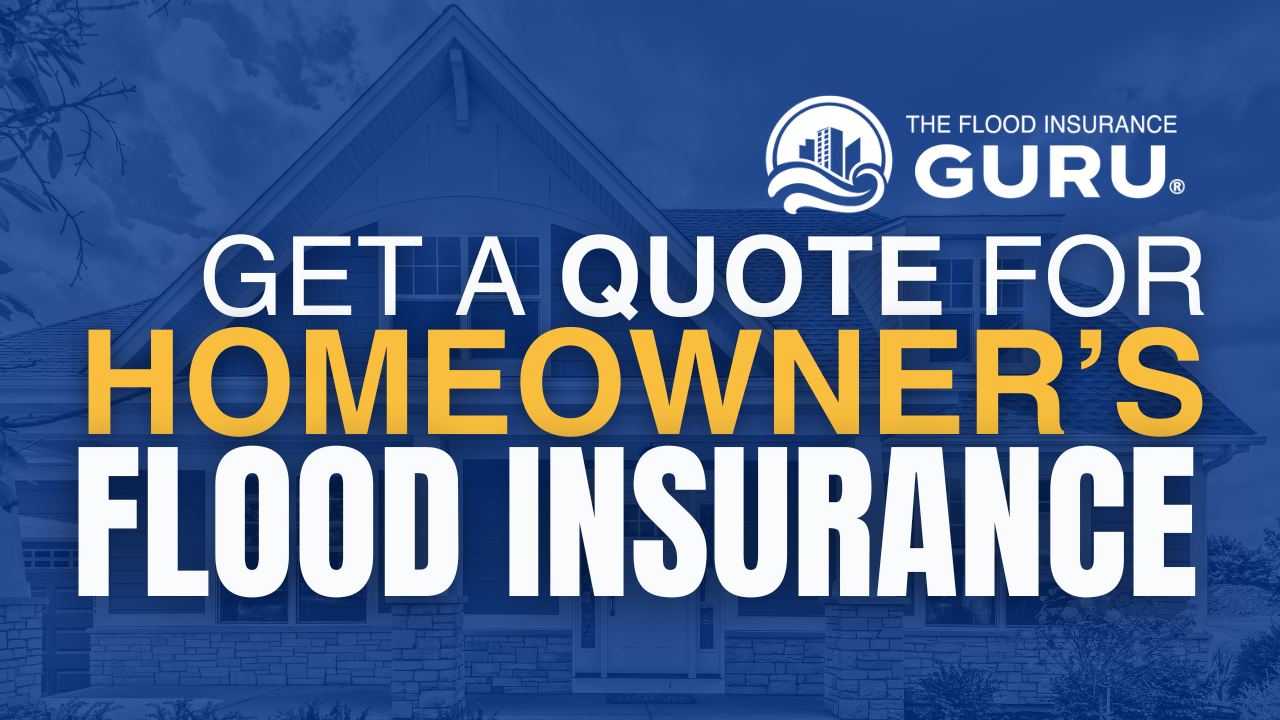2024 Flood Insurance Guide: Navigating Coverage and Costs in Flood Zone AE
Guide to Flood Insurance in Flood Zone AE in 2024
Flood insurance is a crucial aspect of protecting your property and finances, especially if you live in a flood-prone area like Flood Zone AE. Understanding what flood insurance is, the different flood zones, coverage options, bank requirements, and available programs is essential to make informed decisions in 2024.
What is Flood Insurance?
Flood insurance is a specialized insurance policy designed to cover property damage and loss caused by flooding. Flooding is define as 2 properties or 2 acres inundated by water that are normally dry It is important to note that standard homeowner’s insurance policies typically do not cover flood damage. Therefore, if you live in a flood-prone area or own property in such an area, it’s essential to purchase a separate flood insurance policy.
Flood insurance policies are usually offered through the National Flood Insurance Program (NFIP) or private insurance companies. These policies provide financial protection for your home, belongings, and other structures on your property in case of flood-related incidents.
Flood Zones
Flood zones are geographical areas designated by the Federal Emergency Management Agency (FEMA) based on the likelihood of flooding. One of the common flood zones is Flood Zone AE. These zones help determine flood risk and guide insurance decisions. Flood Zone AE signifies a 1% annual chance of flooding, often referred to as the “100-year flood zone” or “high-risk area.” However, it’s important to remember that flooding can occur outside of these zones, so it’s essential to assess your specific risk.
Flood Insurance Coverages
Flood insurance policies typically offer two main types of coverage:
1. Building Coverage:
- This covers the physical structure of your home, including the foundation, walls, roof, and built-in appliances. It also includes electrical and plumbing systems.
- Building coverage helps repair or rebuild your home if it is damaged or destroyed by a flood.
2. Contents Coverage:
- Contents coverage protects your personal belongings, such as furniture, electronics, clothing, and other possessions.
- It’s essential to document your belongings and their value to ensure you have adequate contents coverage.
Bank Requirements
If your property is located in a Flood Zone AE or any other high-risk flood zone, your lender may require you to purchase flood insurance as a condition of your mortgage. Lenders want to protect their investment, and flood insurance helps mitigate the risk of property damage.
To meet your bank’s requirements, you’ll need to provide proof of flood insurance coverage and maintain it for the duration of your mortgage. The insurance premium can typically be included in your monthly mortgage payment.
The bank is typically going to require one of two things
- Max coverage of $250,000 available through FEMA
- Loan amount on the property
If you are going to be going with private flood insurance the bank is probably going to want a copy of the policy jacket or a see it has the private flood insurance clause.
This clause list a number of things that must be met for the private flood insurance to be accepted. The good news as of December 2022 if you are doing a FHA or VA loan the bank now accepts private flood insurance. This means now all borrowers have the chance to pay less for flood insurance and save money on flood insurance in the future.
Just consult with your insurance agent and your bank on FEMA rates and make sure flood insurance isn’t going too impact your mortgage payment too much. remember this will be an additional expenses on top of your standard home insurance.
When it comes to bank requirements remember they will require flood insurance as long as you have a mortgage and are in AE zone or any special flood hazard area flood zone designation. If you do not have an active flood insurance policy then they could force place one at 3x the rate.
This won’t have any impact on the actual flood risk or generally flood claims. To get flood insurance at the best price make sure to consult with a flood insurance expert.
They should also be able to show you ways you to avoid being required to purchase flood insurance. This is what happened to me when i did a flood zone change on my own property. Also remember you can calculate flood insurance cost in the future by having an insurance agent look at the fema flood insurance policy.
Flood Insurance Options
When it comes to flood insurance, you have two primary options: You want to meet with an insurance expert to get the options on flood insurance costs. You want to look at what it will cost today and potentially 5 years down the road. When flood waters are in your home is not the time to find out you do not have the coverages that you. We see this every day is some one wants to save money on flood so an insurance agent gives them a really high deductible. However most people do not realize that unlike homeowners insurance flood insurance has a separate deductible for each coverage.
This means if you have a $5000 deductible you could possibly have a $15,000 deductible.
1. National Flood Insurance Program (NFIP):
- The NFIP is a federal program administered by FEMA. It offers flood insurance policies to property owners, renters, and businesses in participating communities.
- NFIP policies have set coverage limits, and premiums are based on factors like your property’s location, the elevation of your home, and its structure.
- Policies can be purchased through insurance agents who participate in the NFIP.
Flood Insurance through the NFIP
Coverages available on flood insurance through the NFIP
- Building coverage $250,000
- Personal property $100,000
2. Private Flood Insurance:
- Private insurance companies also offer flood insurance policies. These policies may offer more flexible coverage options and limits compared to the NFIP.
- Premiums for private flood insurance can vary widely, so it’s essential to shop around and compare quotes from different insurers.
- Some properties may benefit from private flood insurance if they require specialized coverage not provided by the NFIP.
Private companies offer some different coverages that the national flood insurance program. They offer coverages above the 250,000 on buildings and 100,000 on personal property. They also offer additional living expenses this could help rent a place if your property is flooded. This is exactly what we had happen in 2018 when one of our customers in Nebraska had a private policy and her neighbors had NFIP policies. She had a place to live for 6 months that was paid for. This really helped remove an additional stress off her during this time.
National Flood Insurance Program (NFIP)
The NFIP is a federal program established to provide affordable flood insurance to property owners, promote sound floodplain management, and reduce the financial burden on taxpayers after flood disasters. Some key points about the NFIP include:
– Community Participation:
- Communities must participate in the NFIP to make flood insurance available to their residents.
- Participating communities implement floodplain management measures to reduce flood risk.
- Generally more than 80% of communities participate in the NFIP
– Coverage Limits:
- The NFIP has coverage limits, which may not be sufficient for high-value properties.
- Excess flood insurance can be purchased to supplement NFIP coverage.
– Premiums:
- Premiums for NFIP policies are based on factors such as flood zone, building’s elevation, and coverage amount. We get asked everyday at The Flood Insurance Guru how much does flood insurance cost? I know this is a very important question ist was a concern of mine when i bought a house in flood zone ae more than 12 years ago. I was told my premiums were going to be $3000 when they should have been $300.
According to FEMA the average flood insurance is around $1000 a year. What we see on the private side is probably closer to the $800 side. Remember the flood risk on each property is going to be different so rates might be all over the board. This is especially true for private flood insurance companies where you might get a $300 rate and then a $3000 rate from another one.
Alot of this has to do with their reinsurance cost. This is the actual insurance they have to buy to make sure they can pay claims. Some companies can take on more exposure than other companies.
Private Flood Insurance
Private flood insurance offers an alternative to the NFIP. It can provide more customized coverage options and potentially competitive premiums. Some aspects of private flood insurance to consider are:
Private flood insurance market can offer flood insurance to a much lower price in many situations especially on properties in the special flood hazard area.
– Customized Coverage:
- Private insurers may offer tailored policies to meet specific needs, including higher coverage limits for valuable properties. Unlike the NFIP if you need flood insurance quicker you can probably get it through a private company as their wait periods are usually much shorter that the federal flood insurance program.
Some of these coverages could be limited based on your foundation type like a basement. many companies like the NFIP offer limited coverages on properties below ground.
Many of these private companies are also not using flood maps as much as other things like elevation certificates, elevations, replacement cost, and distance to water to determine flood insurance premiums.
The cost of flood insurance has changed alot in the last few years as these private companies have changed their modeling after flood events and FEMA has released risk rating 2.0
The risk of flooding across the country has never been higher when reviewing the risk over the course of a 30-year mortgage.
– Risk Assessment:
- Private insurers may use advanced risk assessment models to determine premiums and coverage, which can result in more accurate pricing.
At the flood insurance guru we designed a tool called flood risk verification that will tell what the risk assessment is. You can access it by clicking here.
Here are some things it provides
- Estimated flood risk score
- Estimated flood insurance premium
- Flood risk score
- Flood zone
- Distance to water
- If flood insurance is required
– Policy Flexibility:
- Private policies can offer greater flexibility in terms of coverage and deductibles. In some situations they can
Knowing Flood Risk
Understanding your flood risk is paramount when considering flood insurance. To determine your flood risk:
- Check FEMA’s Flood Insurance Rate Map (FIRM) to identify your property’s flood zone and base flood elevation (BFE).
- Consider hiring a professional surveyor or engineer to assess your property’s elevation.
- Evaluate your property’s history of flooding or proximity to bodies of water.
- Consult with local authorities or FEMA to gather information about past flood incidents in your area.
In conclusion, flood insurance is a vital safeguard for homeowners and property owners in Flood Zone AE or other flood-prone areas in 2024. Understanding the types of coverage available, bank requirements, and your flood risk will help you make informed decisions and protect your property and financial well-being from the potential devastation of flooding. Whether you choose the NFIP or private flood insurance, taking proactive steps to secure coverage is a wise investment in your future peace of mind. Click below to start your flood insurance policy in three simple steps

Information contained on this page is provided by an independent third-party content provider. This website make no warranties or representations in connection therewith. If you are affiliated with this page and would like it removed please contact editor @producerpress.com







